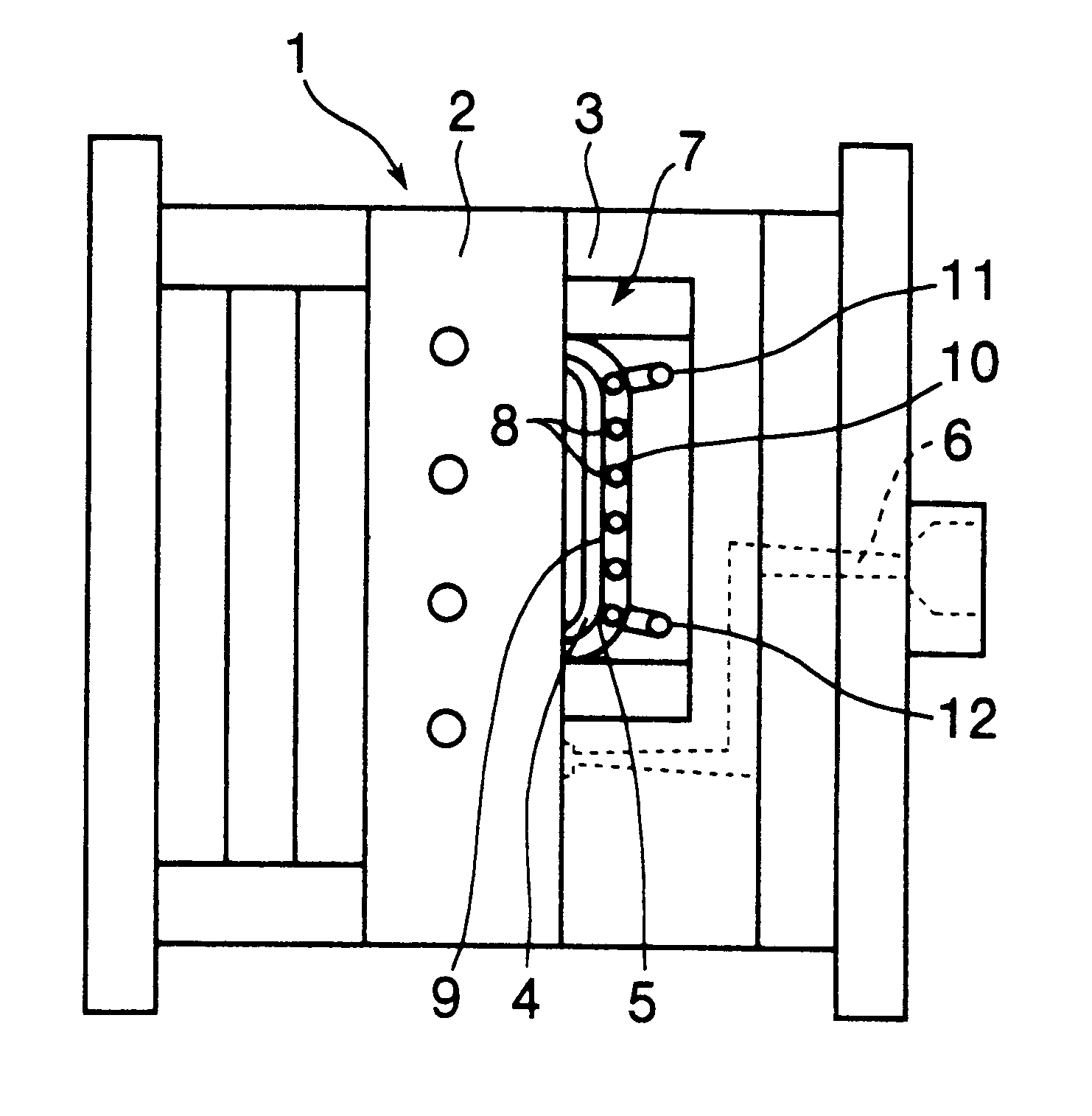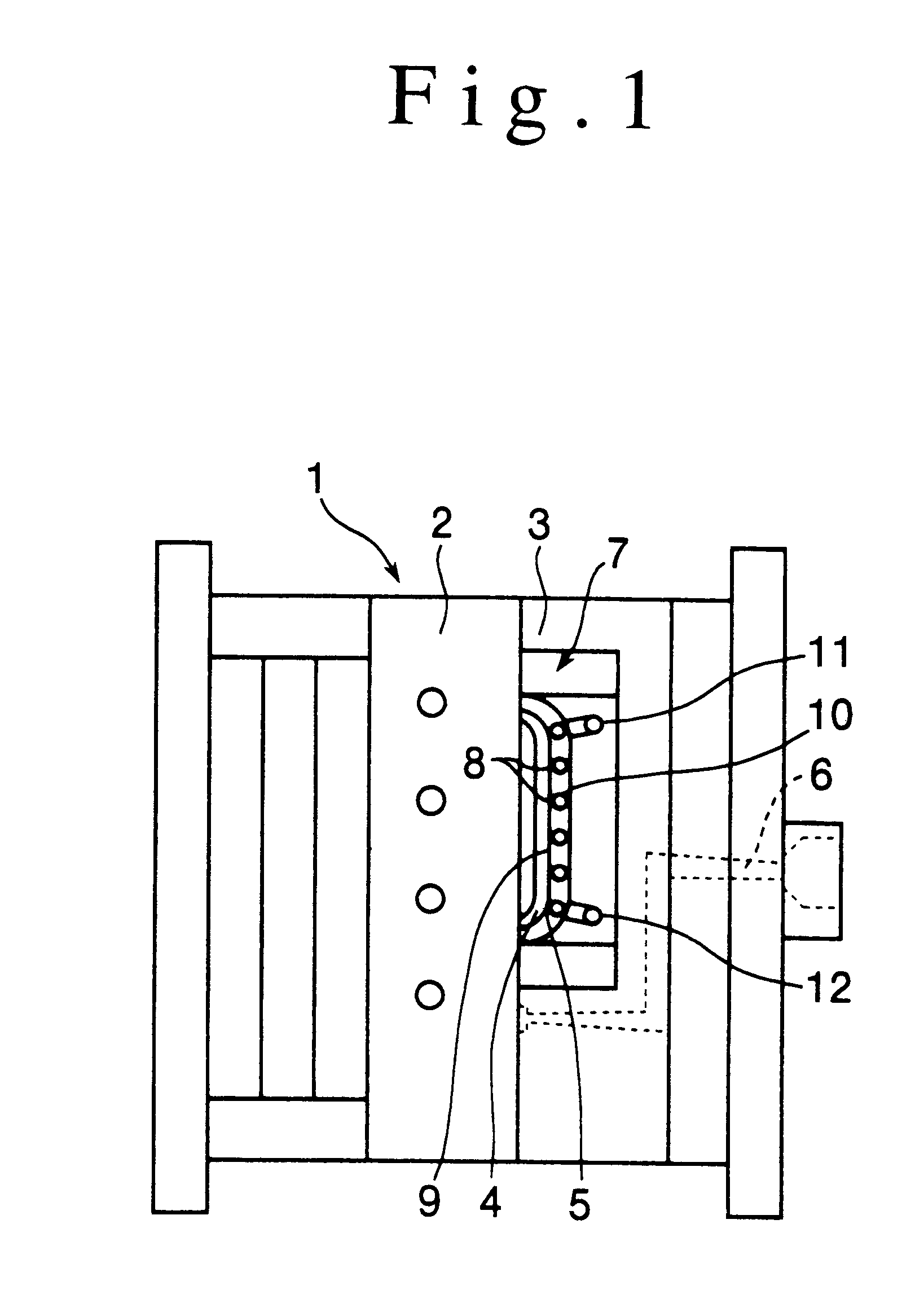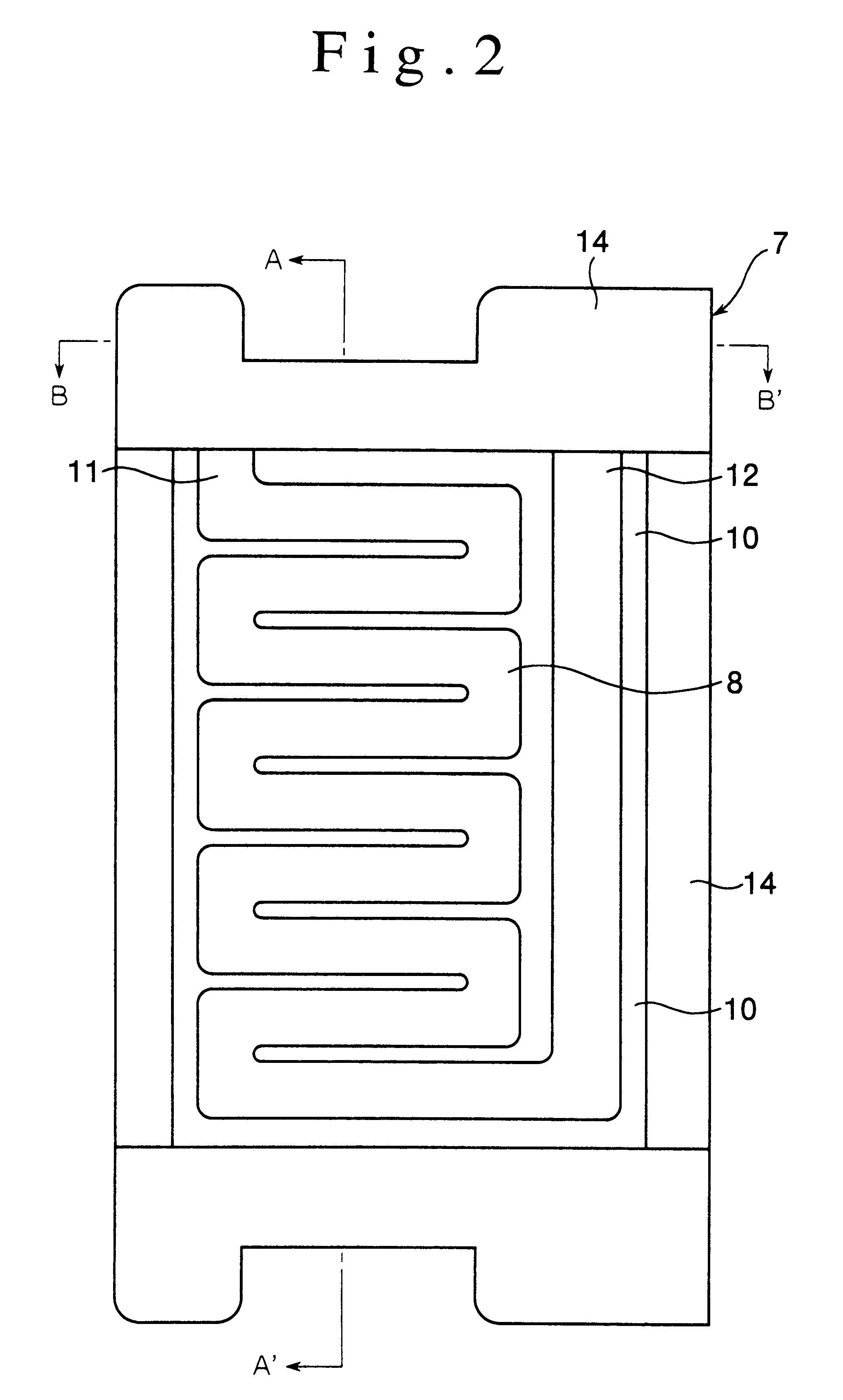Method for injection molding of plastic products having excellent transcription properties
a technology of transcription properties and injection molding, which is applied in the direction of coatings, etc., to achieve the effect of high transcription and high accuracy
- Summary
- Abstract
- Description
- Claims
- Application Information
AI Technical Summary
Benefits of technology
Problems solved by technology
Method used
Image
Examples
embodiment 1
[Embodiment 1]
Some preferred embodiments of the above mentioned invention are to be explained next.
FIG. 1 is an outline diagram showing an embodiment of plastic injection molding metallic mold in case of conducting the molding method of this invention.
The plastic injection molding metallic mold 1 shown in FIG. 1 consists roughly of the core 2 (the non-visible face side of product) and the cavity 3 (the visible face side of product), they are both coupled to the injection molding machine beyond the figure, and the core 2 and the cavity 3 can be opened and closed. The concave portion 5 responsive to the outside shape of product 4 is formed to the core 2 and the cavity 3, and the molten plastic flows into the concave portion 5 from the injection molding machine outside the figure via the sprue 6 provided at the stipulated location of cavity 3 so that the product 4 may be molded. The product visible face side of this product 4 is speedily heated to the high temperature and cooled down d...
embodiment 2
[Embodiment 2]
The product visible face side metallic mold surface temperature was speedily heated up to 120.degree. C. during the resin charging and speedily cooled down to 60.degree. C. during cooling and the injection molding was conducted (Experiment 3) using the same unit as Embodiment 1 and the impact resistance polystyrene (HT560, glass transfer temperature at 97.degree. C., Idemitsu Petroleum Chemical). Further, the molding cycle (metallic mold closing--injection--pressure holding--cooling--metallic mold opening--taking out the product) at this time was set to 60 seconds, the time required for heating was 18 seconds, the time required for cooling was 25 seconds, and the temperature raising speed of metallic mold surface temperature was set to 3.degree. C. every second with the temperature lowering speed being set to 2.degree. C. every second. For information, the impression of different size square cone shape was previously given on the metallic mold surface using a diamond t...
embodiment 3
[Embodiment 3]
The details of this embodiment are to be explained with reference to FIG. 10 through FIG. 12. FIG. 10 is a schematic diagram showing an embodiment of plastic injection molding metallic mold relating to this invention.
The plastic injection molding metallic mold 1 shown in FIG. 10 roughly consists of the core 2 (product non-visible face side) and the cavity 3 (product visible face side), they are both coupled to an injection molding machine beyond the figure, and the core side 2 and the cavity side 3 can be opened and closed. The concave portion 5 corresponding to the outside shape of product 4 is formed to the core 2 and the cavity 3, the molten plastic flows into the concave portion 5 from the injection molding machine beyond the figure via the sprue 6 installed at the stipulated location of cavity 3, so that the product 4 may be molded. The product visible face side of this product 4 is heated to a high temperature and cooled down at high speed during the molding by t...
PUM
| Property | Measurement | Unit |
|---|---|---|
| surface temperature | aaaaa | aaaaa |
| temperature | aaaaa | aaaaa |
| surface temperature | aaaaa | aaaaa |
Abstract
Description
Claims
Application Information
 Login to View More
Login to View More - R&D
- Intellectual Property
- Life Sciences
- Materials
- Tech Scout
- Unparalleled Data Quality
- Higher Quality Content
- 60% Fewer Hallucinations
Browse by: Latest US Patents, China's latest patents, Technical Efficacy Thesaurus, Application Domain, Technology Topic, Popular Technical Reports.
© 2025 PatSnap. All rights reserved.Legal|Privacy policy|Modern Slavery Act Transparency Statement|Sitemap|About US| Contact US: help@patsnap.com



